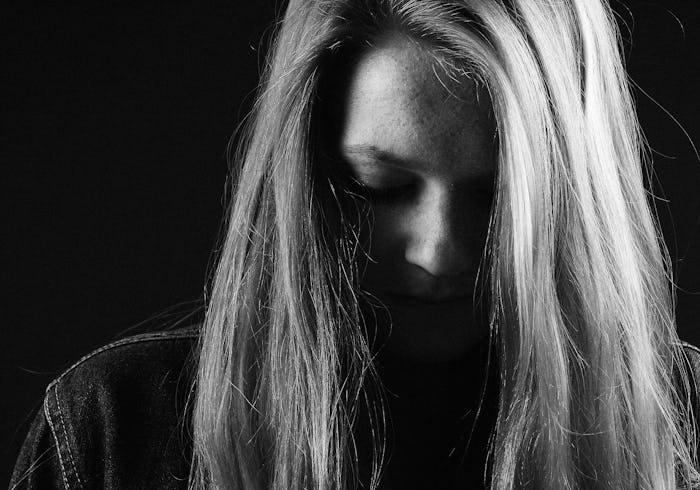The narrative about new moms feeling bliss and celebratory joy after the birth of a baby has been touted as the standard. And for some new moms, that is the case. For others, however, the birth of a baby can trigger so many other emotions as well, including extreme sadness. When faced with weariness and overwhelming distress many women may start to wonder if they have postpartum depression, or PPD. Furthermore, they might wonder how long does it take for PPD to set in?
PPD is not rare by any means and, according to the Center for Disease Control and Prevention (CDC), approximately one in eight women experience PPD. Many medical professionals agree that it can be hard sometimes for women to discern whether they're experiencing typical baby blues that crop up after childbirth or clinical PPD. Baby blues typically set in right after childbirth and are caused by the severe change in hormones and extreme exhaustion that is labor, delivery, and taking care of a newborn. According to the mental health website Help Guide, women experiencing baby blues may feel weepy, stressed, sleep deprived, isolated and overall, just emotionally fragile. The baby blues state is actually quite short-lived and impacts as many as 70 percent of new moms, as noted by Web MD.
PPD is very similar and may include anger and rage, which is why it's so hard for women to tell whether or not they have it. The only real difference in PPD and baby blues is the duration it lasts - PPD is longer.
There is not an exact timeline of when PPD sets in, but typically if you have symptoms of depression or anxiety anytime within the 12 month period immediately following the birth of your baby it's considered PPD, according to the Postpartum Progress website. As mentioned, trying to figure out if you just have a case of the baby blues or full blown PPD can be challenging. But the way to know if you have PPD and not baby blues is if your feelings of depression don't stop after one to two weeks following childbirth, according to the previously mentioned Web MD article. PPD symptoms don't just go away on their own or dissipate like baby blues. PPD symptoms continue for several weeks beyond those initial weeks.
It's also entirely possible that it was never baby blues from the start and it was always PPD. Serious indicators of PPD that can start immediately following childbirth and are a real concern include: extreme anxiety, hallucinations and/or thoughts about harming yourself or your baby. If you experience these feelings at all, whether it's in the first one to two weeks following childbirth or beyond, you need to get help from a medical professional right away as these feelings are not typical of baby blues.
According to the Baby Center, the exact causes of PPD are unknown, but some life factors may put you at a higher risk including history of depression, traumatic birth experience, loss of a child, unplanned or unwanted pregnancy, multiples, teen pregnancy, and having a baby with health problems or birth defects. There are also physical considerations including: the sharp drop in hormones after delivery and lack of sleep.
If you think you have PPD it's important to remember that you're not alone and help is available. There is nothing to be ashamed of and it's not your fault. If you find it hard to reach out to a medical professional right away, you can also rely on friends and family to help you. PPD can be treated and if you seek help you will be saving yourself and your baby.
If you're feeling like you want to harm yourself or your baby, or you need help right away, there are people you can talk to.
The National Suicide Prevention Hotline: 800-273-TALK (8255)
PPD Moms: 800-PPD-MOMS (800-773-6667)
